How Tailored Corrective Exercises Can Aid in Pain Management
October 12, 2025
12 min

Understanding the Impact of Corrective Exercises on Pain Relief
Pain is a complex and often persistent experience impacting millions worldwide. In recent years, tailored corrective exercises have emerged as a vital, non-invasive approach that addresses the root causes of pain by targeting musculoskeletal imbalances and dysfunctional movements. This article explores how personalized corrective exercise programs contribute significantly to pain management, improve posture and mobility, and integrate seamlessly within comprehensive multimodal pain therapies, empowering individuals to regain control over their well-being.
How Tailored Corrective Exercises Drive Pain Relief and Functional Improvement

Corrective exercises play a vital role in managing and alleviating chronic pain by directly targeting the underlying causes of discomfort, such as muscle imbalances, poor posture, and movement dysfunctions. When these exercises are personalized through thorough assessments, they focus on strengthening weakened muscles and stretching overly tight ones, helping to restore proper body mechanics (Corrective Exercises and Muscle Imbalance, Corrective Exercises Your Secret Weapon Against Chronic Pain).
Addressing muscle imbalances and faulty movement patterns not only alleviates pain but also improves flexibility and joint stability. For example, strengthening core muscles can reduce strain on the spine, while stretching tight hip flexors can improve posture and reduce back pain (Corrective Exercises for Spinal Alignment, Enhancing Mobility and Strength with Corrective Exercises). Proper alignment achieved through corrective movements decreases pressure on nerves and joints, offering significant relief (Why Corrective Exercises and Movement Are Essential to Lasting Pain Relief).
Enhanced mobility is another benefit, as these exercises break down scar tissue, improve range of motion, and increase flexibility. This improved movement not only eases existing pain but also helps prevent future injuries by establishing proper movement habits (Corrective Exercise for Pain Relief, Types of Corrective Exercises and Their Benefits).
Integrating corrective exercises into a comprehensive treatment plan — often alongside chiropractic adjustments, soft tissue therapy, and lifestyle modifications — maximizes benefits. Professional guidance ensures exercises are performed correctly, safely, and progressively, fostering long-term improvements (Benefits of Corrective Exercises, Corrective Exercises in Chiropractic Treatment).
In sum, tailored corrective exercises empower individuals to actively participate in their recovery. They help reduce pain, boost functional capacity, and support ongoing health by addressing the root causes of musculoskeletal issues, making them an essential component of holistic pain management strategies (Exercise Therapy for Chronic Pain, Exercise and Activity in Pain Management).
Benefits of Corrective Exercises for Health, Posture, and Mobility
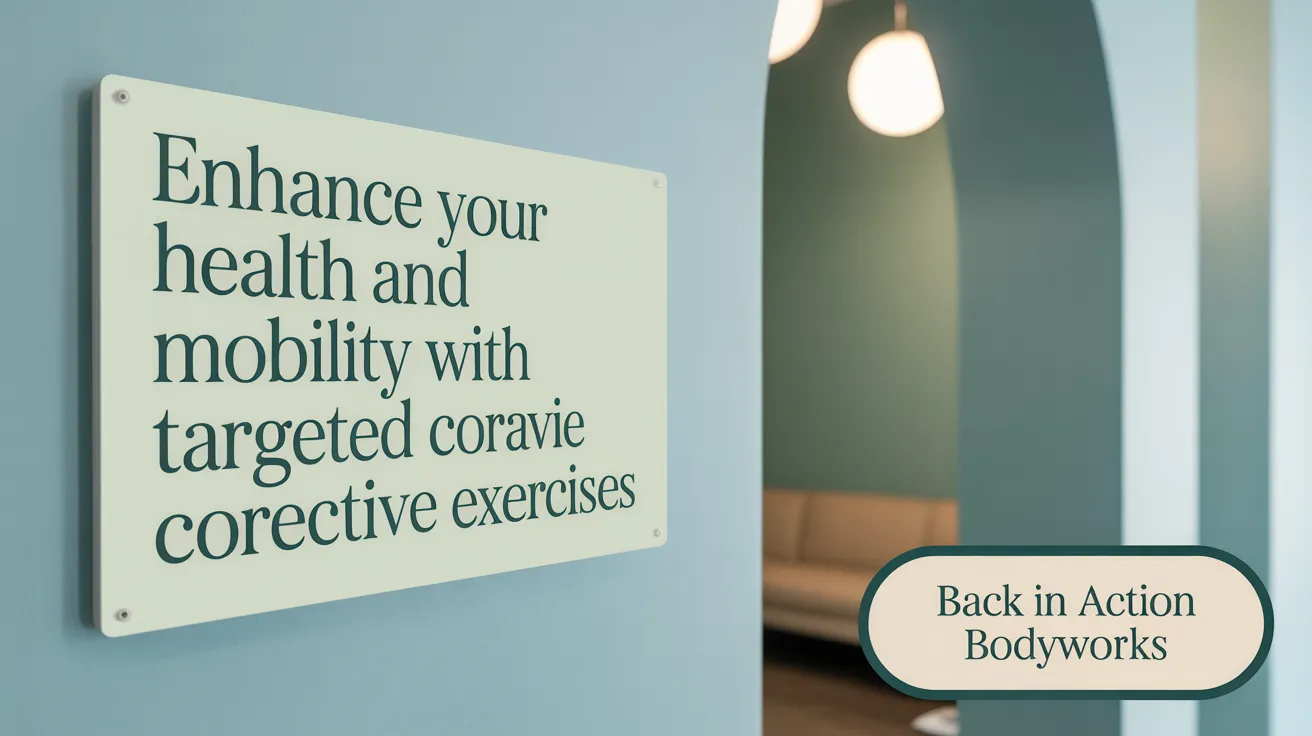
Corrective exercises provide a wide range of advantages for overall health, posture, and mobility by targeting musculoskeletal imbalances and restoring proper movement patterns. These exercises are designed to correct alignment issues, strengthen weak muscles, and improve flexibility, which collectively reduce chronic pain and muscle tension often caused by poor posture. For example, they can alleviate discomfort in areas such as the neck, shoulders, back, and pelvis, where misalignments frequently develop due to habits like prolonged sitting or repetitive movements (Corrective exercises benefits, Corrective Exercises To Relieve Pain).
In addition to pain relief, corrective exercises enhance joint stability and flexibility. Strengthening stabilizing muscles supports the spine and joints, decreasing the risk of injuries and improving the efficiency of movement. Increased circulation resulting from these exercises promotes healing and boosts energy levels, supporting overall physical well-being (Benefits of Corrective Exercises, Corrective exercises overview).
Integrating stretching, strengthening, and balance routines through personalized programs ensures improvements in posture and mobility. This not only aids in daily activities but also supports long-term spinal health and functional fitness. Regular practice of corrective exercises leads to better posture, reduced pain, enhanced flexibility, and greater mobility, contributing significantly to an active and healthier lifestyle (Corrective exercises overview, Benefits of Corrective Exercises).
Overall, corrective exercises are a vital component of preventive health strategies and rehabilitation, helping individuals feel more aligned, energized, and capable in their daily lives (Corrective exercises benefits, Benefits of Corrective Exercises).
Mechanisms Behind Pain Reduction Through Corrective Exercises

Corrective exercises play a vital role in alleviating chronic pain by targeting the root causes of musculoskeletal dysfunctions. They improve muscle balance, enhance flexibility, and strengthen supporting muscles, which collectively promote better posture and joint stability. A significant mechanism through which they reduce pain involves activation of the body's endogenous pain modulation systems. When performed regularly, these exercises stimulate the release of natural pain-relieving chemicals such as opioids, serotonin, and endocannabinoids, which act on the central nervous system to diminish pain perception (Exercise and pain modulation, Exercise and Activity in Pain Management).
Furthermore, corrective exercises influence central nervous system activity by reducing neuroinflammation—a key contributor to chronic pain states. They help modulate central sensitization, a condition where the nervous system becomes hyper-reactive, amplifying pain signals. By promoting balanced excitatory and inhibitory neural pathways, these exercises can decrease neural hyperexcitability and dampen pain signals (Exercise therapy for chronic pain).
In addition to neurochemical effects, corrective exercises impact the immune system by increasing the production of anti-inflammatory cytokines and encouraging the transformation of macrophages into an anti-inflammatory phenotype. This immune response helps reduce tissue inflammation, swelling, and associated pain (Exercise and chronic pain).
Overall, the pain-relieving effects of corrective exercises derive from a complex interplay of mechanical improvements, neurobiological regulation, and immune modulation. Incorporating these exercises into personalized treatment plans can lead to sustainable, long-term relief from chronic pain, addressing both physical dysfunctions and neuroimmune factors involved in pain pathways (Benefits of Corrective Exercises, Corrective Exercises: Your Secret Weapon Against Chronic Pain).
Effective Types of Corrective Exercises for Pain and Functional Gains

Corrective exercises play a vital role in alleviating pain and enhancing overall movement. They typically encompass three main components: stretching tight muscles, strengthening weakened muscles, and engaging in mobility and postural exercises. These elements work synergistically to correct muscle imbalances and improve body mechanics.
Stretching exercises target over-tight muscles that may restrict movement or contribute to pain. For example, hamstring stretches and chest openers help release tension that often affects posture and spinal alignment. Strengthening routines focus on muscles that are weak or underperforming, such as core stabilizers or back muscles, vital for supporting joints and maintaining proper posture.
Mobility and postural exercises aim to restore normal joint range of motion and correct faulty postures. Activities like shoulder blade squeezes, chin tucks, and gentle thoracic rotations help improve alignment and reduce strain. Functional movement training, including squats and cat-cow stretches, mimics daily activities to retrain muscles and joints for optimal performance.
Balance and stabilization exercises, such as single-leg stands and stability ball routines, further enhance coordination and protect against falls or future injuries. Implementing these targeted movements consistently, especially under professional supervision, ensures adaptation and progress.
Personalized programs that tailor these exercises to individual needs are most effective. This approach not only reduces pain but also improves flexibility, joint mobility, and overall body function, promoting long-term health benefits.
Personalization: A Cornerstone in Corrective Exercise Prescription

Tailoring corrective exercises to each individual is vital for effective pain management and long-term recovery. Since every person has unique musculoskeletal structures, movement patterns, and pain triggers, a one-size-fits-all approach often falls short. A comprehensive assessment by healthcare professionals such as chiropractors or physical therapists helps identify specific muscle imbalances, postural issues, and movement dysfunctions that contribute to pain. Corrective exercises overview
This detailed evaluation allows for the development of targeted programs that address underlying causes rather than just symptoms. For example, if a patient suffers from lower back pain due to weak core muscles and tight hip flexors, their corrective exercises will focus on strengthening the core and stretching the hips, tailored to their body's needs. Lower back pain statistics | Corrective exercises for spinal alignment
Customization enhances safety by avoiding exercises that may aggravate existing issues and ensures motivation by involving exercises that align with the patient's goals and capacities. It also optimizes treatment results — precise corrections can improve mobility, restore proper movement patterns, and lower the risk of future injuries. Tailored Corrective Exercises in Chandler | Benefits of Corrective Exercises
The benefit of personalized exercise plans is supported by research indicating that targeted correction leads to better pain relief, improved posture, and increased functional ability. By integrating specific corrective movements into a patient’s routine, therapy becomes more efficient and engaging, fostering adherence and promoting overall well-being. Corrective exercises benefits | Exercise therapy for chronic pain
In conclusion, individualized corrective exercise prescriptions are fundamental for achieving sustainable pain reduction and facilitating a quicker, safer recovery process. Exercise therapy for pain management
Implementing Corrective Exercises: Techniques and Strategies for Effective Pain Management
What techniques and strategies can be employed to implement corrective exercises for pain management?
Implementing corrective exercises effectively begins with thorough assessments conducted by qualified healthcare professionals, such as chiropractors or physical therapists. These assessments help identify specific muscle imbalances, postural issues, and movement dysfunctions that contribute to pain. Based on this evaluation, personalized exercise plans are developed, targeting the root causes of discomfort (Corrective Exercises and Muscle Imbalance, Corrective Exercises Overview).
Gradual progression is crucial. Starting with low-intensity, simple movements ensures muscles adapt safely without causing discomfort or injury. Emphasizing proper form and technique reduces the risk of adverse effects like muscle strain or symptom flare-ups (Exercise Therapy for Chronic Pain, Exercise and Activity in Pain Management). Regular monitoring and adjustments to the exercise routine support ongoing improvement.
Incorporating a variety of exercise modalities—such as mobility drills, stretching, stability, and strengthening exercises—can maximize benefits (Types of Corrective Exercises, Corrective Exercises Types and Benefits). For example, combining core stabilization with flexibility routines can enhance spinal support and reduce pain (Core Training for Spine Stability, Corrective Exercises for Spinal Alignment). These exercises, when integrated into a comprehensive treatment plan, can promote better biomechanics, increase joint mobility, and foster muscular balance (Improving Posture with Corrective Exercises, Movement Pattern Retraining Techniques).
Patient education is a cornerstone strategy. Educating patients about movement patterns, posture correction, and activity pacing empowers them to practice exercises safely and independently (Patient Education in Chronic Pain Rehabilitation, Pain and Pain Management Education). A biopsychosocial approach that includes psychological support, relaxation techniques, and manual therapy complements physical exercises, addressing emotional and mental factors influencing pain perception (Biopsychosocial Approach in Pain Management, Relaxation Techniques for Pain).
To ensure safety and effectiveness, exercises should ideally be supervised, especially in initial stages (Professional Guidance for Corrective Exercises, Physical Therapist-Led Pain Management Exercises). Proper rest, hydration, and adherence to activity modifications support recovery (Long-Term Non-Surgery Pain Management Strategies). Ultimately, consistent and tailored corrective exercises help in managing chronic pain, preventing future injuries, and improving overall function and quality of life (Exercise Therapy Benefits for Chronic Pain, Exercise and Chronic Pain Management).
Corrective Exercises within Comprehensive Multimodal Pain Management
Corrective exercises are a cornerstone in an integrated approach to managing chronic pain, working synergistically with other therapies to address the root causes of discomfort. Their primary role is to tackle biomechanical issues—such as muscle imbalances, poor posture, and movement dysfunctions—that often exacerbate pain symptoms. When these exercises are personalized based on detailed assessments, they help restore muscular support, improve joint alignment, and enhance overall mobility (Corrective Exercises To Relieve Pain, Corrective exercises overview, Benefits of Corrective Exercises).
Beyond physical improvements, corrective exercises contribute to addressing psychological and lifestyle factors that influence pain perception. Incorporating stress reduction, sleep hygiene, and education about movement fosters a holistic treatment environment (Regular movement and exercise, Pain management overview, Exercise and pain modulation). This comprehensive strategy not only alleviates physical symptoms but also empowers patients, increasing their confidence and engagement in recovery (Tailored exercise therapy).
Involving patients in shared decision-making and setting aligned, realistic goals encourages adherence. Patients are more likely to commit to regular practice when exercises are tailored to their preferences and capabilities (Value-based goal setting in exercise therapy, Shared decision-making in therapy). This participatory approach improves compliance, which amplifies benefits such as reduced dependency on medications and invasive procedures (Managing chronic pain, Pain management strategies, Management of pain without medications).
Research supports that combining corrective exercises with manual therapies, lifestyle modifications, and psychological support creates a potent mix that promotes functional restoration (Exercise therapy for chronic pain, Exercise therapy in pain management, Exercise and chronic pain). Overall, these exercises play an essential role in a multimodal framework, enhancing the effectiveness of the entire pain management plan and fostering sustainable, long-term benefits (Multimodal lifestyle approach for chronic pain, Chronic pain management strategies).
Corrective Exercises as Non-Pharmacological Pain Management Tools
Corrective exercises are practical, non-invasive strategies that help manage chronic pain by addressing the underlying causes of discomfort related to muscle imbalances, poor posture, and movement dysfunctions. These exercises aim to improve physical function through targeted movement reeducation, muscle strengthening, and flexibility enhancement, all without relying on medications or surgical interventions. Learn about the Benefits of Corrective Exercises and how Corrective Exercises can aid Chronic Pain Relief.
By focusing on restoring proper movement patterns, correction of the musculoskeletal system reduces physical stress and potential pain triggers. For example, strengthening weak muscles and stretching tight areas can prevent undue strain on joints and soft tissues, alleviating chronic pain symptoms naturally. Explore techniques for Improving Movement Patterns with Corrective Exercises and Addressing Musculoskeletal Imbalances.
Furthermore, when corrective exercises are combined with relaxation techniques and mind-body practices like Yoga or Tai Chi for Pain Management, they foster a holistic approach to pain relief. These combined modalities can modulate systemic inflammation, which often contributes to persistent pain, and improve psychological well-being by reducing stress, anxiety, and emotional distress associated with chronic discomfort. Additional benefits of Exercise Therapy and Multimodal Lifestyle Approaches for Chronic Pain are highlighted in recent research.
Such exercises also support better posture and movement habits, decreasing the likelihood of reinjury or aggravation of existing conditions. Their safety profile—minimal risk and no side effects—makes them an ideal component of comprehensive, patient-centered pain management programs. Read more on the integration of Corrective Exercises in Chiropractic Care and Injury Prevention as part of holistic treatment.
Overall, corrective exercises serve as effective, safe, and empowering tools that enhance physical function, reduce pain triggers, and complement relaxation and mind-body strategies, offering a sustainable approach to managing chronic pain in daily life. For further insights into combined treatment options, consult resources on Non-pharmacological Pain Management.
Enhancing Recovery, Rehabilitation, and Long-Term Mobility through Corrective Exercises
Corrective exercises play a vital role in improving overall recovery, rehabilitation, and long-term mobility by addressing the root causes of movement dysfunctions. These exercises are specifically designed to target issues such as muscle weaknesses, joint restrictions, and postural imbalances, ultimately restoring proper biomechanics and muscle function. They encompass a variety of movements, including range of motion, strengthening, flexibility, and balance exercises, which are tailored to each individual based on thorough assessments (Corrective Exercises Overview, Benefits of Corrective Exercises).
In rehabilitation settings, especially following injury or surgery, corrective exercises support healing by reinforcing correct movement patterns and preventing maladaptive compensations. When integrated with manual therapies such as chiropractic adjustments or soft tissue work, these exercises help solidify gains, improve joint stability, and accelerate functional recovery (Corrective Exercises After Chiropractic Adjustments, Corrective Exercises and Chiropractic Care).
Prevention of re-injury is another crucial benefit. Regular practice of targeted corrective movements helps maintain optimal movement mechanics, reduce strain on vulnerable areas, and reinforce proper posture. This ongoing process not only prevents setbacks but also preserves the progress achieved during therapy (Corrective Exercises for Injury Prevention, Corrective Exercises and Movement for Pain Relief).
Moreover, corrective exercises underpin long-term wellness by empowering individuals to sustain healthy movement habits in daily life. They aid in maintaining flexibility, strength, and mobility, facilitating a smoother return to everyday activities and recreational pursuits. The continuous application of these exercises supports overall physical resilience, helps manage chronic issues, and contributes to a sustained state of functional health (At Home Exercises for Chronic Pain, Benefits of Corrective Exercises).
In summary, corrective exercises are essential tools that enhance recovery, bolster rehabilitation efforts, and promote lasting mobility. They leverage personalized, movement-focused routines to address individual impairments, prevent future problems, and foster a proactive approach to maintaining an active, healthy lifestyle (Corrective Exercises To Relieve Pain, Understanding Corrective Exercises).
Embracing Tailored Corrective Exercises for Effective Pain Management
Tailored corrective exercises serve as a cornerstone in modern pain management by addressing the root biomechanical, neurological, and psychosocial factors contributing to chronic pain. Through personalized assessment and targeted interventions, these exercises restore balance, improve posture, and enhance mobility, leading to meaningful reductions in pain and disability. Integrated within multidisciplinary treatment plans, corrective exercises offer safe, non-invasive strategies that empower individuals to actively participate in their recovery and maintain long-term wellness. Embracing these individualized movement therapies can transform pain management approaches, fostering resilience and improved quality of life for those affected by persistent pain.
Recent articles

Effective Corrective Exercises for Long-Term Pain Relief

Back Pain Benefits: What Chiropractic Care Can Do for You
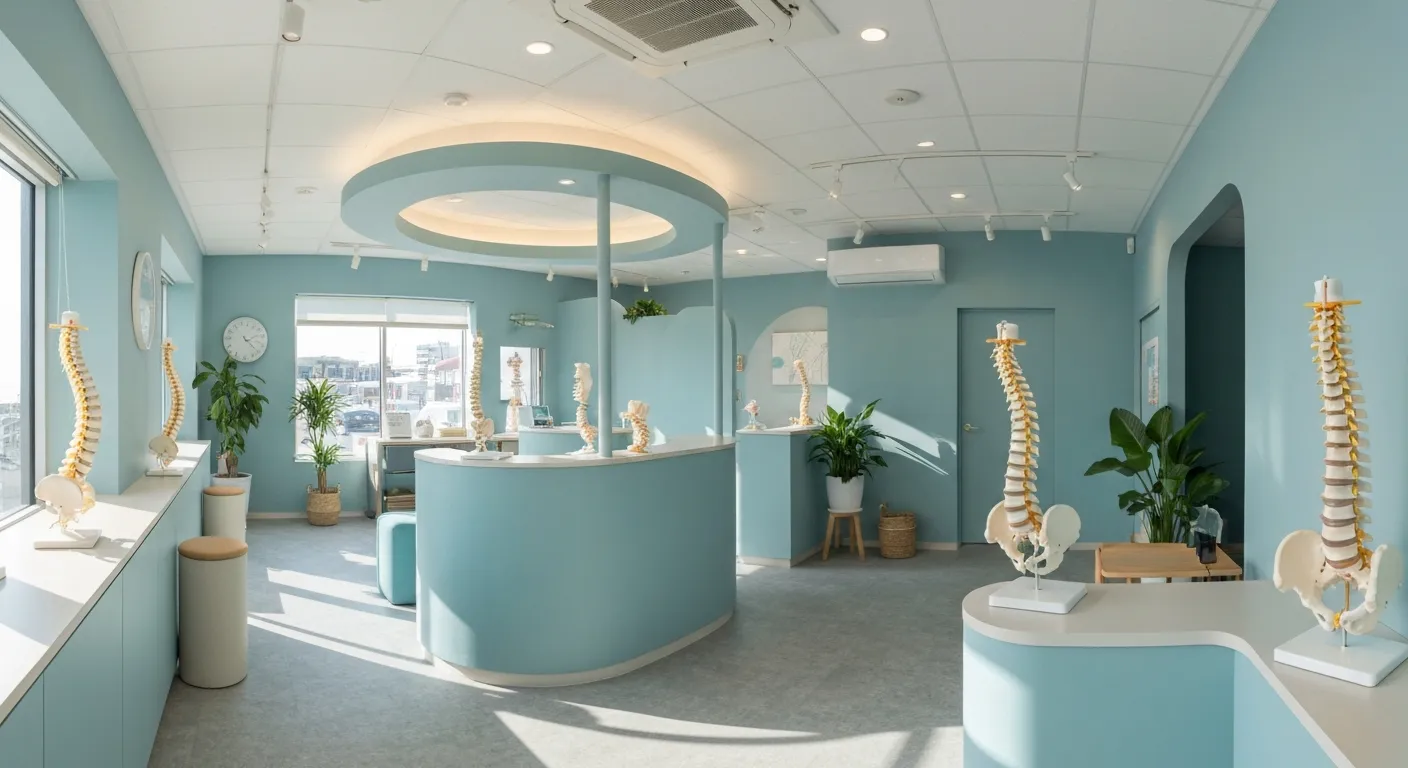
Spinal Decompression Techniques for Effective Sciatica Relief

Top Nutritional Counseling Tips for Enhanced Wellness
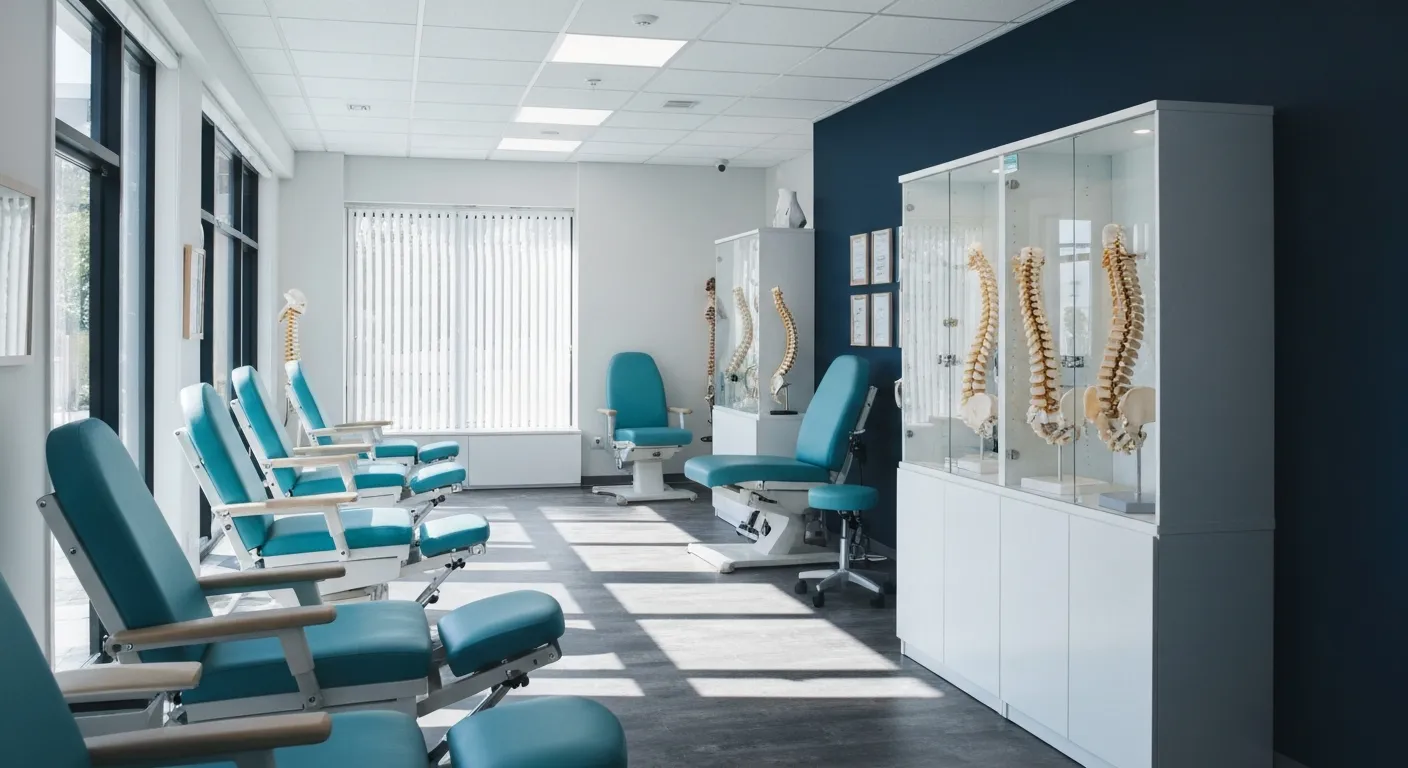
6 Lifestyle Habits That Boost Spine Health Daily

Discover Holistic and Non-Surgical Pain Relief Solutions

Exploring Holistic and Non-Surgical Treatment Options for Pain
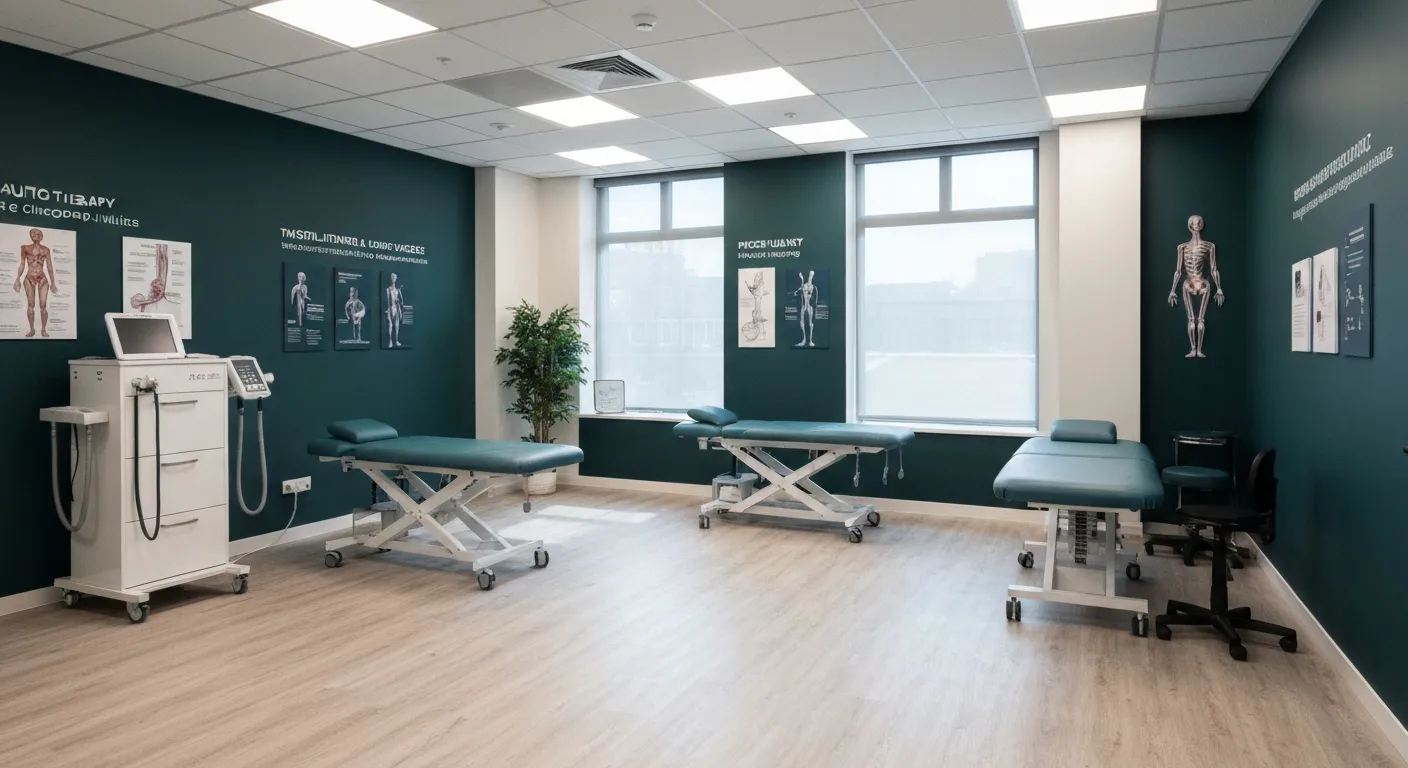
The Role of Physiotherapy in Enhancing Chiropractic Care Outcomes

Complementing Chiropractic Care with Physiotherapy: What You Need to Know
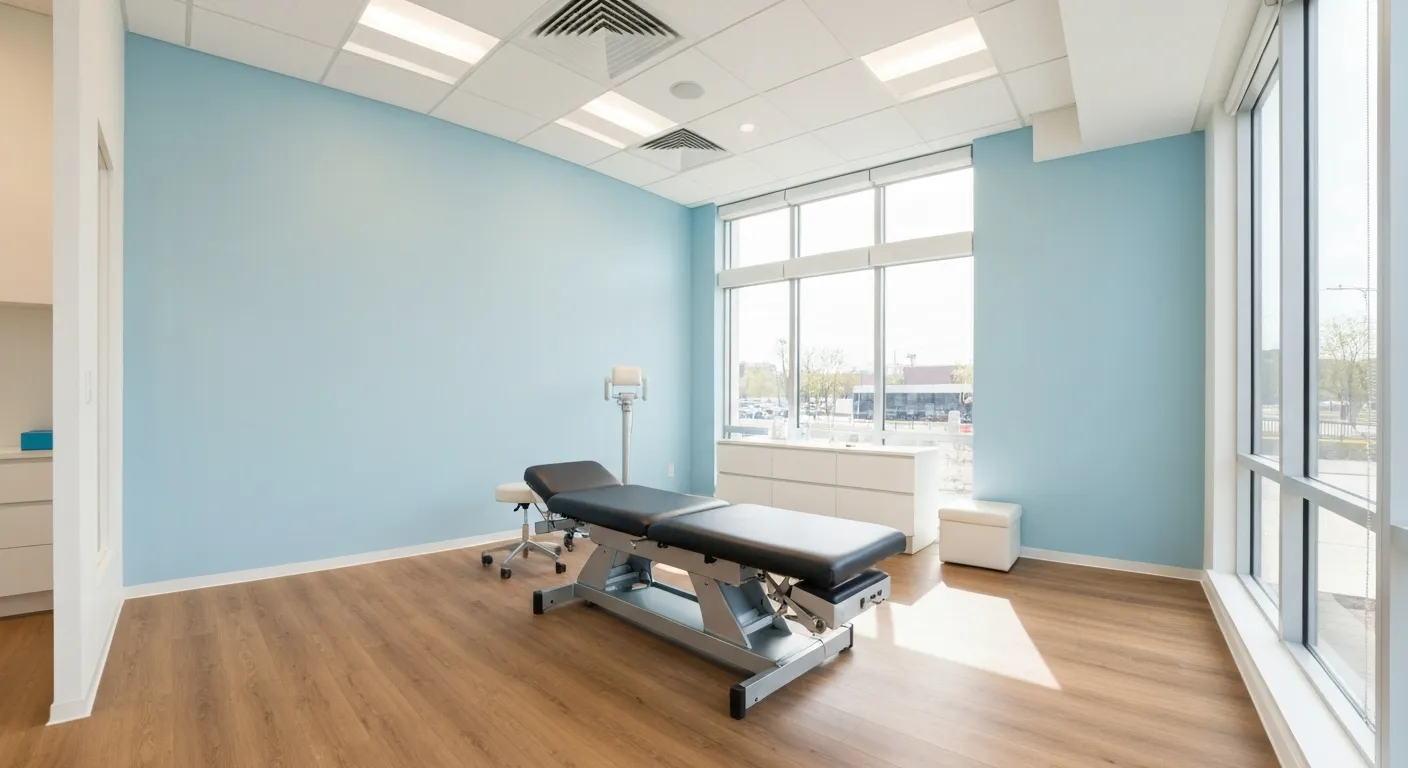
What to Expect During Your First Chiropractic Visit

Simple Lifestyle Adjustments to Maintain a Healthy Spine

Personalized Nutritional Counseling for Improved Health Outcomes

Exploring Non-Surgical Treatments for Spine-Related Conditions

An Introduction to Spinal Decompression for Sciatica Patients

Transformative Success Stories: Patient Experiences with Chiropractic Treatments

Why Chiropractic Care Is Essential for Back Pain Relief

Addressing Underlying Causes Versus Symptom Management in Pain Care

The Role of Nutrition in Enhancing Chiropractic Treatment Effectiveness

Sciatica Treatment Options: Is Spinal Decompression Right for You?

Lifestyle Tips to Maintain a Healthy Spine and Prevent Back Issues

The Synergy Between Physiotherapy and Chiropractic Treatments

What Happens During Your Initial Chiropractic Consultation

Effective Corrective Exercises for Sustainable Pain Management

Taking a Root Cause Approach to Chronic Pain Management

Holistic Pain Management Techniques Without Surgery

How Patient Success Stories Validate Chiropractic Care Benefits

Spinal Decompression: Innovative Treatment for Sciatic Nerve Pain

Spinal Decompression Therapy: A Non-Invasive Approach to Sciatica Relief

Exploring Holistic Approaches Beyond Surgery for Pain Relief

Practical Lifestyle Advice to Support a Healthy Spine Every Day

Corrective Exercise Routines Designed for Long-Term Pain Prevention

Real Patient Stories: Overcoming Chronic Pain with Chiropractic Care

Lifestyle Changes That Promote a Healthy Spine and Prevent Injury

How Addressing the Root Cause of Pain Leads to Lasting Relief

Non-Surgical Holistic Therapies to Manage Chronic Pain Effectively

Nutritional Counseling's Impact on Physical Health and Healing

Benefits of Regular Chiropractic Care for a Stronger Back

Your First Chiropractic Visit: What to Expect and How to Prepare

Patient Experiences: How Chiropractic Care Transformed Their Lives

Exploring Holistic, Non-Surgical Options for Pain Management

Combining Physiotherapy with Chiropractic Treatments for Enhanced Recovery

Holistic Treatments That Offer Alternatives to Surgery for Pain Relief

Corrective Exercise Strategies for Long-Term Spine Health

How Physiotherapy Complements Chiropractic Adjustments for Better Outcomes

First-Time Chiropractic Visitors: What You Should Know

Understanding the Importance of Treating Pain at Its Source

Adopting Lifestyle Changes to Support Your Spine's Wellness

Utilizing Physiotherapy to Enhance Chiropractic Treatment Outcomes

The Key Advantages of Chiropractic Care for Back Pain Sufferers

Why Focusing on Root Causes Improves Pain Treatment Success

Corrective Exercises That Promote Lasting Pain Relief and Mobility

Sciatica Relief Through Targeted Spinal Decompression Techniques

Preparing for Your First Chiropractic Appointment with Confidence

Healthy Lifestyle Habits for Maintaining Spinal Alignment

Success Stories Highlighting Chiropractic's Role in Pain Recovery

Top Benefits of Chiropractic Care for Chronic Back Pain

Nutrition Tips to Boost Your Overall Wellness and Recovery

How Chiropractic Care Alleviates Back Pain Naturally

How Nutritional Counseling Supports Overall Wellness and Spine Health

Step-by-Step Guide to Your First Visit with a Chiropractor

Using Nutrition to Support Chiropractic and Overall Wellness

Integrating Physiotherapy in Your Chiropractic Healing Journey

How Physiotherapy Complements Chiropractic Adjustments for Faster Healing

Lifestyle Tips for Maintaining a Healthy Spine and Preventing Back Pain

Heartwarming Patient Testimonials Highlighting Chiropractic Success

How Proper Nutrition Supports Chiropractic and Physiotherapy Treatments

Combining Physiotherapy and Chiropractic Treatments for Optimal Recovery

Why Chiropractic Treatments Are Effective for Managing Back Pain

Choosing a Chiropractor: Tips for Finding a Trusted Provider

Integrating Physiotherapy and Chiropractic: Benefits and What to Expect

How Tailored Corrective Exercises Can Aid in Pain Management

Chiropractic Care: A Proven Solution for Alleviating Back Pain

What to Expect at Your First Chiropractic Visit: A Comprehensive Guide

The Importance of Root Cause Analysis in Effective Pain Management

The Role of Corrective Exercises in Sustaining Pain-Free Living

Combining Chiropractic and Physiotherapy for Comprehensive Pain Relief

How Addressing Underlying Causes Improves Pain Treatment Effectiveness

Maintaining Spinal Health Through Lifestyle Changes and Preventive Care

Understanding the Benefits of Chiropractic Adjustments for Back Pain Sufferers

Spinal Decompression Therapy: A New Hope for Sciatica Relief

Lifestyle Recommendations to Support a Healthy Spine and Reduce Pain
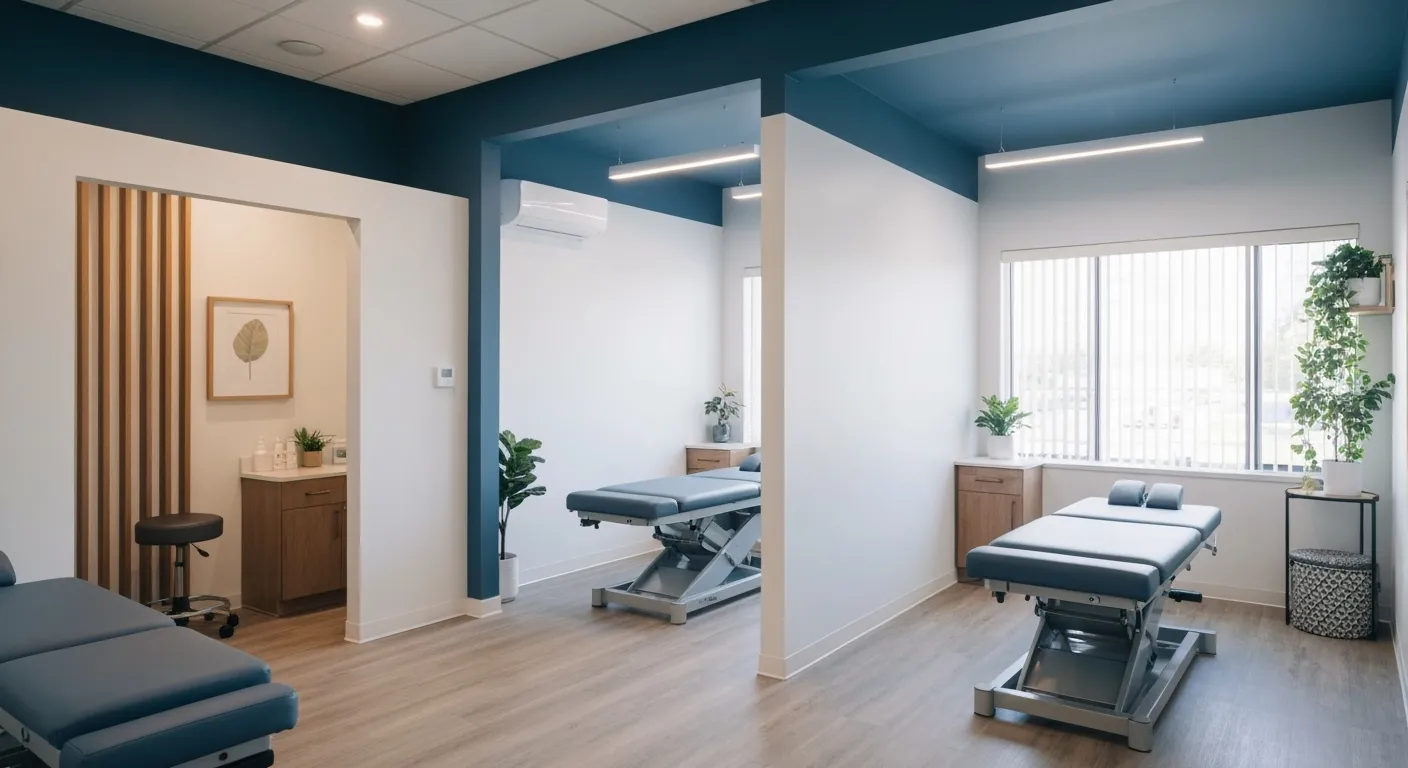
Choosing the Right Chiropractor: Key Factors to Consider Before Your First Appointment

Non-Invasive Treatment Alternatives: A Holistic Approach to Pain Relief

Corrective Exercises to Support Long-Term Relief from Chronic Pain

Exploring Non-Surgical Approaches to Spine Health and Wellness

Tips for Daily Habits That Keep Your Spine Strong

Success Stories: How Chiropractic Treatments Changed Lives

Why Focusing on the Root Cause of Pain Leads to Better Outcomes

Nutritional Counseling and Its Impact on Overall Wellness and Recovery

Patient Testimonials That Showcase the Power of Chiropractic Care

Preparing for Your First Chiropractic Appointment: What You Need to Know
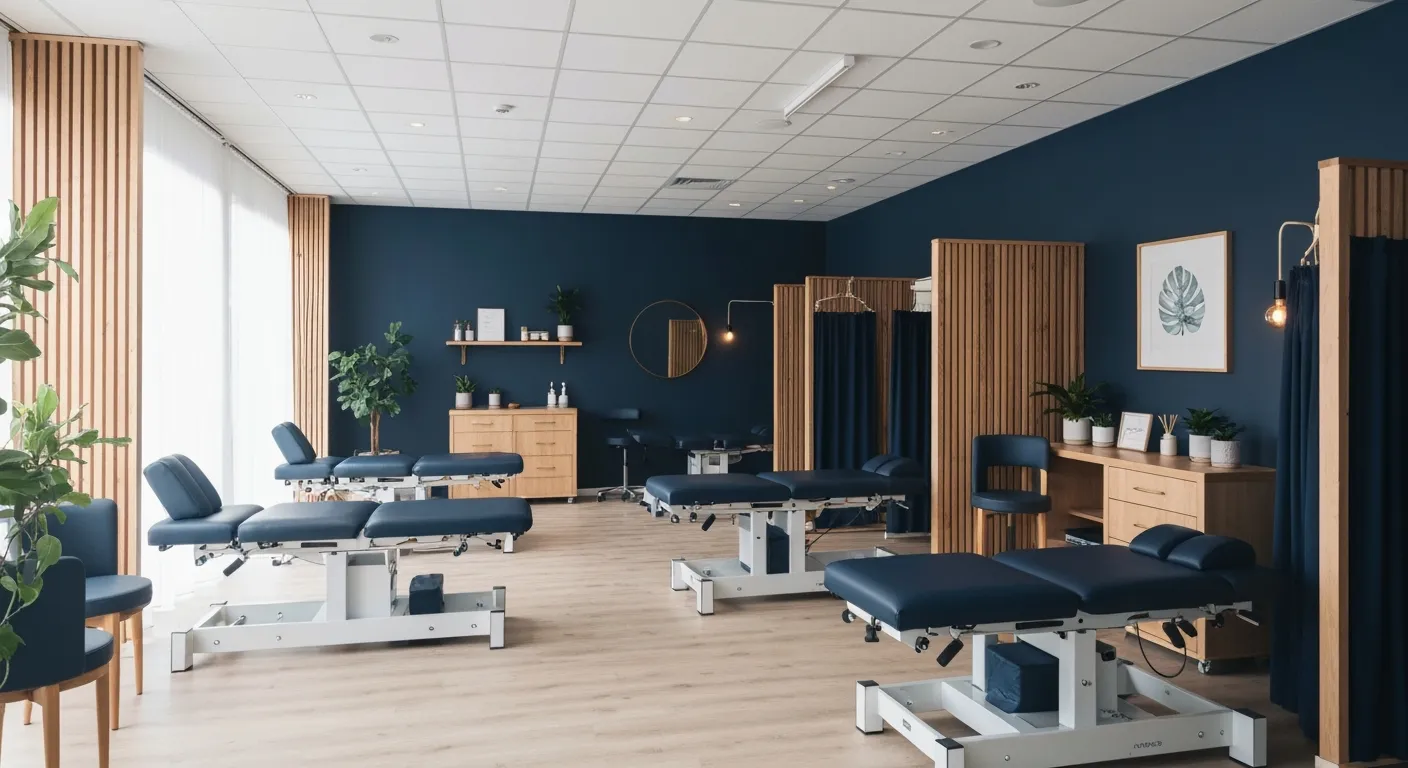
Holistic Treatment Options: Beyond Surgery for Pain Relief
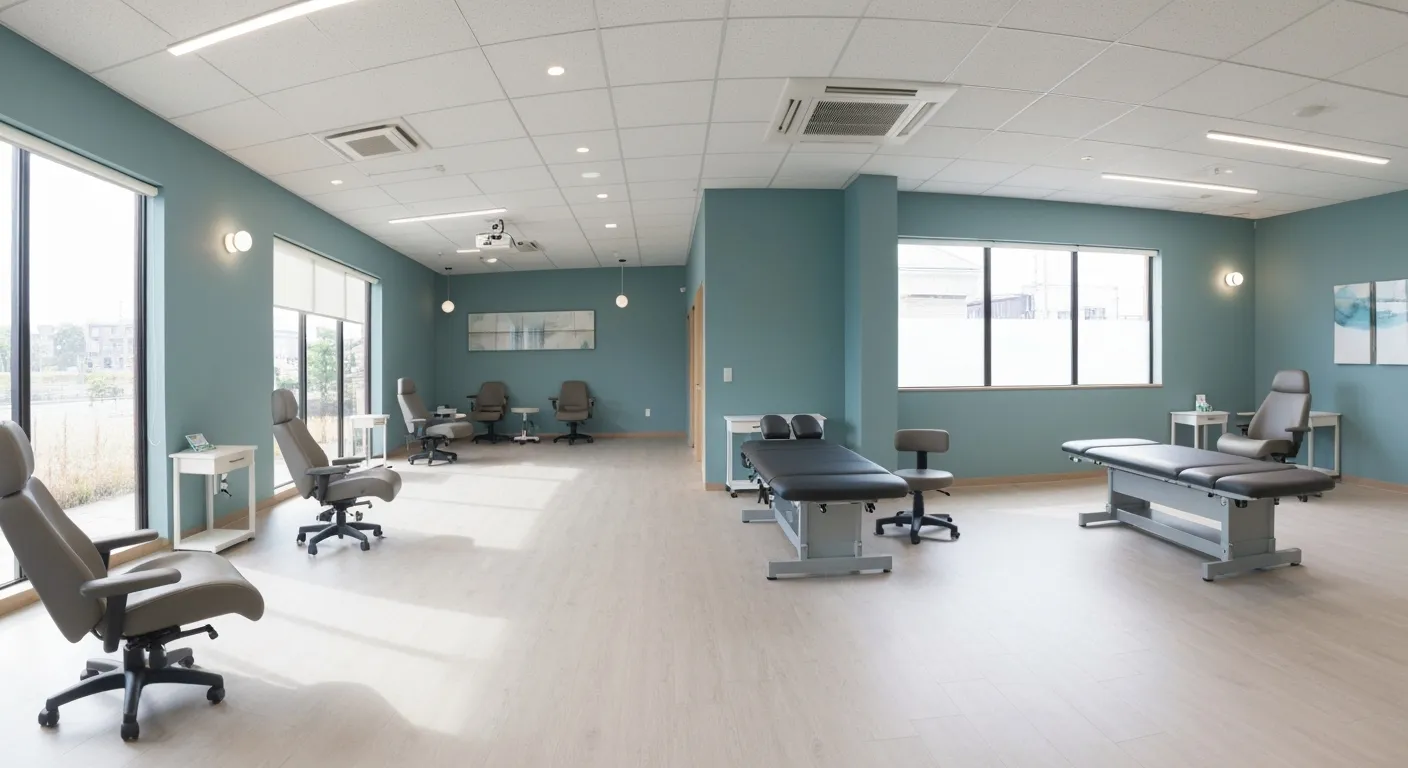
Holistic Pain Relief Methods That Avoid Surgery

Nutritional Strategies for Supporting Spine Health and Recovery

First Chiropractic Visit: What Happens and How to Prepare

Chiropractic Patient Success Stories: Inspiring Journeys to Wellness
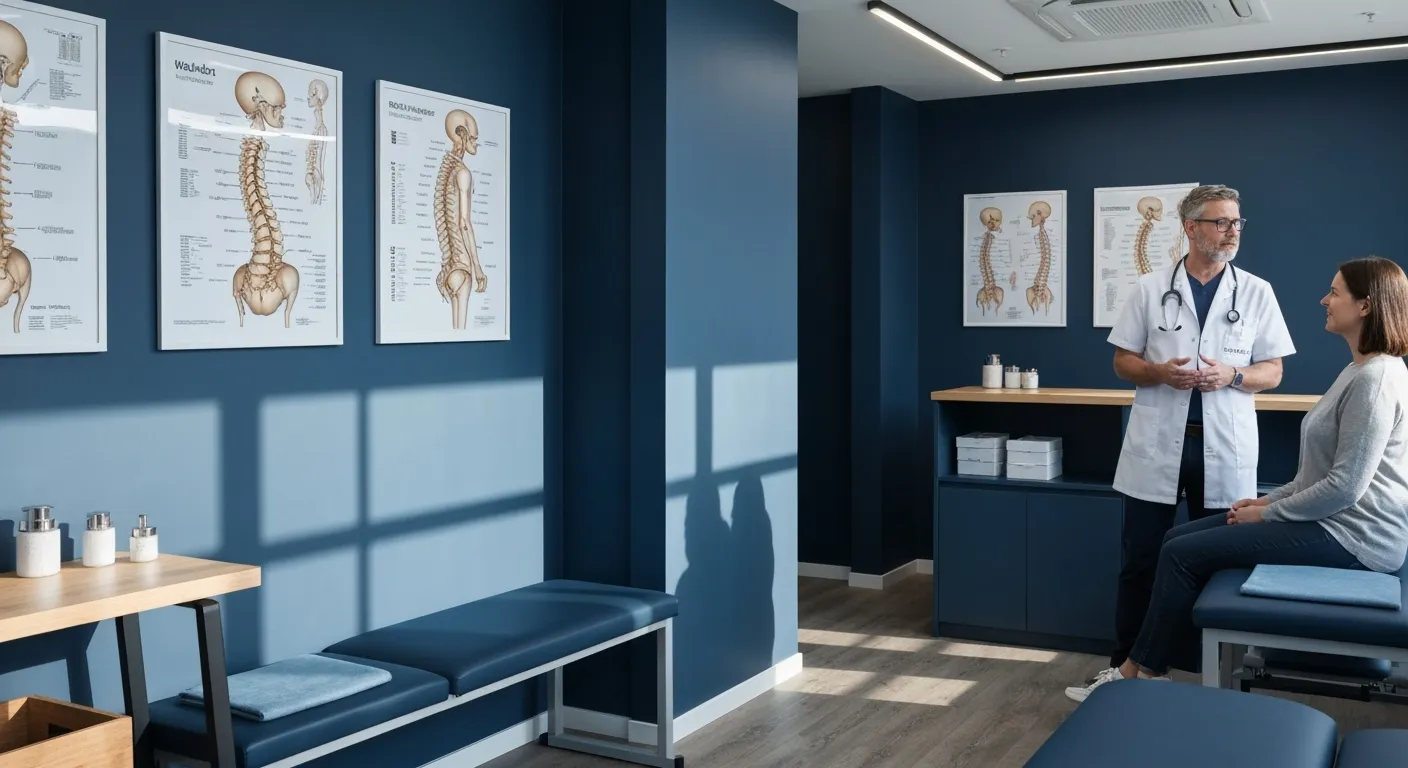
Effectiveness of Spinal Decompression Therapy in Managing Sciatic Nerve Pain

Addressing Pain at Its Source: Why Treating the Root Cause Matters

Corrective Exercise Programs Designed for Long-Term Pain Prevention

